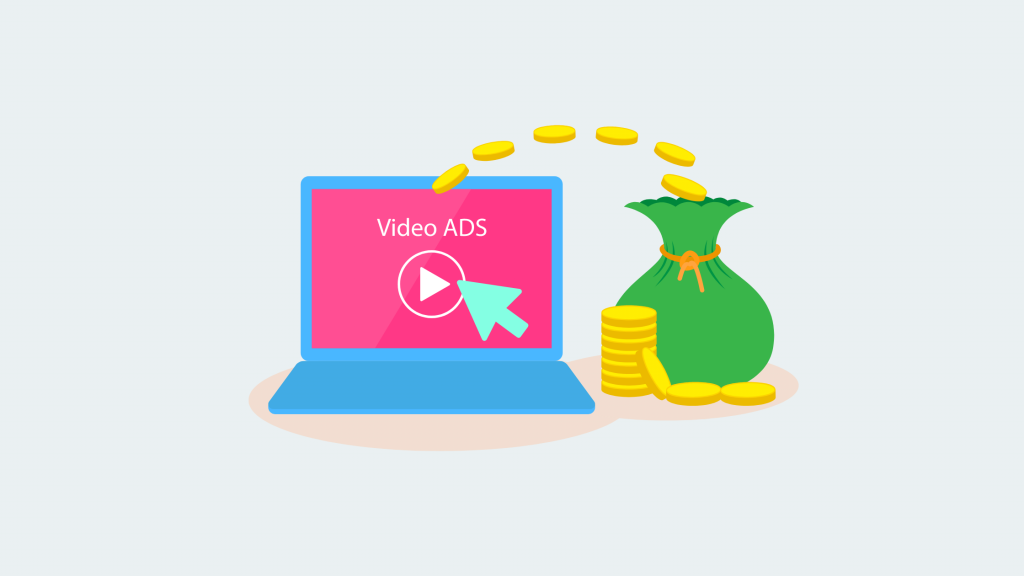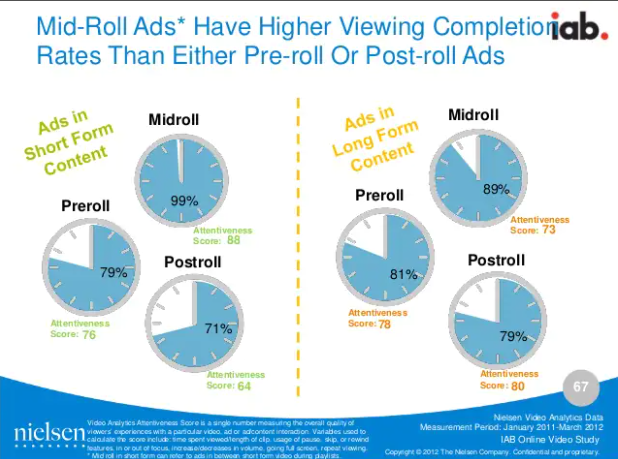
Digital advertising is an ever-evolving industry. Publishers who don’t stay current on these trends end up limiting earning potential. And the hot trend right now? Video advertising.
Video ads are in no way new, but they are seeing a demand like never before. So if you can meet advertisers with a supply of units, you’re on your way to earning big.
Before rushing in, we do recommend you brush up on the best practices and standards. Because while these are a gold mine to some, they quickly become the death of many websites. Luckily for you, you found this nifty (and helpful) post that’ll walk you through what you need to know. So let’s carry on, shall we?
Types of Video Ad Formats
When it comes to video ads, you’ve got options. The IAB (Interactive Advertising Bureau) labels video ads into two format categories, linear and nonlinear. Linear video ads exist within video content. In contrast, nonlinear ads work alongside content as an added layer of video content. So before starting with video advertising, you should determine the video ad format works best for your needs.
Types of Video Ad Units
Within each format lies various ad unit types to work with. You can explore the types below to get familiar with your options.
In-stream video ad unit
For publishers who love to crank out video content, in-stream videos are a great way to capitalize off efforts. You can use them inside both short-form and long-form videos. These ads can play before, during, and after your video content. You may also hear this as pre-roll (before the video plays), mid-roll (in the middle of the video), and post-roll (after the video has finished playing).
Out-stream video ad unit
If you’re not big on video content, you can still leverage video ads with an out-stream ad unit. You’ve probably guessed it–these ads play outside of video content! Publishers can use a standard display ad unit to deliver a video experience. There are several types of out-stream video ad units:
- Native video ads: Native ads will look like an in-feed unit, meant to blend seamlessly into your content. They aim to promote advertisements without disrupting user intent. In other words, they’re a pretty solid choice to balance user experience and ads. These ads are popular amongst publishers and advertisers alike. In fact, native advertising is the second-best top-performing channel for video campaigns. Native video ads will consist of a headline, description, and context for the ads.
- In-article video ads: Similarly, in-article video ads are an in-feed unit that loads between paragraphs of editorial content. However, these ads are video-only creatives and can dynamically load as a user scrolls a page.
- Interstitial video ads: These ads are interactive and take up the entire screen of the visitor’s device. Because they interrupt user experience, it’s important to strategize how to incorporate them into your website.
- Banner video ads: These ad units transform the space of your traditional banner ad into video content. Banner blindness is a genuine obstacle to viewability, so we’d recommend stepping away from this outdated setup.
The Benefits of Video Advertising
Video advertising wouldn’t gain popularity if publishers didn’t see some kind of benefit. So here are a few reasons to consider adopting video advertising:
- Better Rates: Advertisers spend a considerable amount of their budget on video ads. So, CPM’s for video ads run much higher than other ad types.
- Better User Experience: People love videos. In a survey conducted by Hubspot, 54% of consumers wanted to see more videos surrounding brands and companies they support. When done well, publishers can deliver video content and keep users better engaged.
- More Money: Video ads help combat banner blindness and low visibility. In a report conducted by Hubspot, 87% of marketers confirmed video ads give them a positive ROI instead of other ad types. On the publisher side of things (that’s you!), increased engagements and viewability mean more money!
Potential Challenges
Similar to any ad type, video ads have their own unique challenges. These are potential issues publishers should be cautious of.
- It Can Get Tricky: Depending on how you approach implementation, you may need a lot of resources. This can definitely be overwhelming and lead to error. While some websites love to recommend a hefty list of things you’ll need to pull off video advertising, we recommend keeping it simple. Getting tripped up on the technicals will only hurt revenue. Instead, work with an ad management provider who can essentially deliver your video ad units on a silver plate!
- Placement matters: Even though viewers have an appreciation for video, everything has a time and place. Poorly placed ads will disrupt user intent and hinder user experience (UX). So be wary of video popups and loud autoplay videos that will ruin UX.
- It Can Hurt Website Metrics: Throwing caution to the wind with video ads will easily crash your site’s metrics. Videos are code-heavy, leading to slow load times and other Core Web Vitals concerns.
Although you should be aware of these issues, they should not deter you from boosting your revenue with video. Instead, use simple best practices to help combat the challenges mentioned above.
Getting the Most out of Video
Video ads can become quite the slippery slope when not implemented properly. However, using these best practices can help publishers keep user experience intact and fully reap the rewards of video units.
Balance layout
You have a plethora of video ad types to use. So be sure to consider these carefully and decide what will best balance out your website. Review the placement of the content your viewers are coming to see and avoid overshadowing it.
In addition to working alongside content, video ads should balance with other ads on the page too. But in general, too many ads are never good. So be selective with how many ad units you choose to work with, as too many will easily overwhelm users.
Turn off audio
While this may seem like a no-brainer– because it’s pretty startling to have audio just start playing out of nowhere– some publishers don’t get this. The Coalition for Better Ads regards autoplay ads with audio on as the most intrusive ads for users. In the same vein, advertisers know these ads don’t perform well and will even start blacklisting your website. It’s all about viewability, right?
Prioritize viewability
The IAB defines viewability as a minimum of 50% of the ad in view for at least two continuous seconds. If you can’t meet this criteria, you don’t get paid. So if you are going to work with video ads, be sure to place them in a well-seen area of your website. For better viewability, consider a unit placed above-the-fold.
Work with ad length
Short-form video is preferred. In general, lengthy video content loses viewer attention. However, in a study held by the IAB, the impact of length can vary from format to format:

Page load time
It’s no secret ads impact page load speed. Video ads in particular, are heavier files than other ad types. Because of this, they require a solid strategy. Otherwise, you can expect page load speed to crumble–and take your Core Web Vitals down with it. Work with ad professionals to strategize different techniques for balance loading speed. We recommend lazy loading as an effective solution.
Video header bidding
Skip the tricky and resource-heavy old fashion way of approaching video ad units. Instead of worrying about video players and other tech, team up with a header bidding provider for seamless integration. You’ll not only get top-dollar rates for your units, but they can take care of all the back-end work. Which really helps eliminate most of the challenges publishers face with video ads.
Ready to boost your revenue with video ads? Connect with one of our dedicated account representatives to learn more about our video header bidding services.

4 Comments
Comments are closed